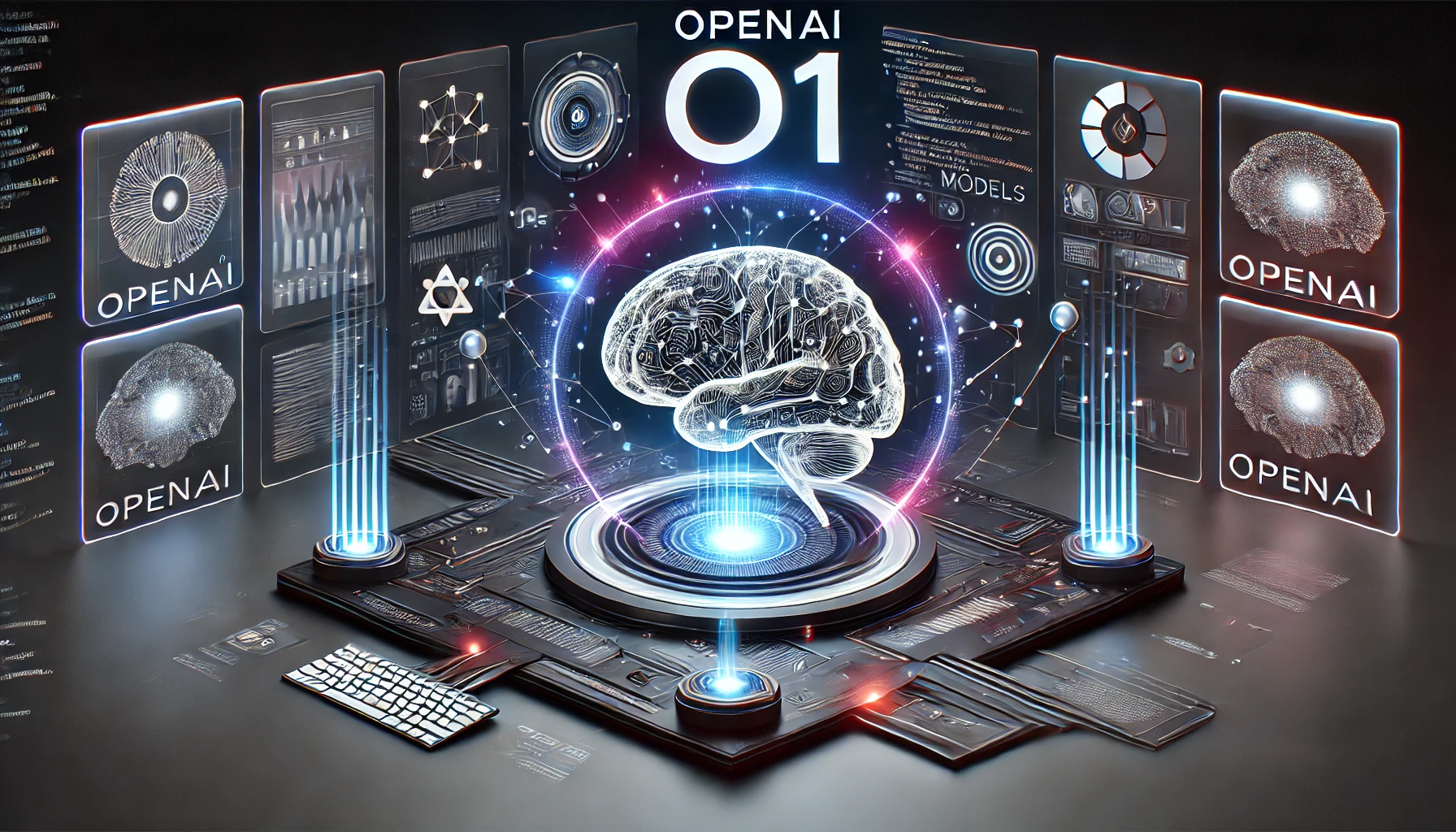OpenAI o1 Models: Features, System Cards, and Mini Versions
OpenAI o1 Models: Artificial intelligence is rapidly transforming how we interact with technology. OpenAI has been at the forefront of this revolution, continuously releasing cutting-edge models to push the boundaries of machine learning. The OpenAI o1 model is one of the most anticipated developments, bringing advanced reasoning, coding capabilities, and enhanced system cards. In this guide, we’ll explore everything you need to know about the OpenAI o1 model, including its performance, features, limitations, and pricing.
Understanding the OpenAI o1 Model: An Overview
The OpenAI o1 model is designed to excel at complex reasoning tasks. Unlike previous versions, such as GPT-4, the o1 series takes AI capabilities to a new level. This model’s standout features make it particularly useful for industries requiring advanced reasoning, such as scientific research, software development, and complex problem-solving.
The OpenAI o1 model comes in two versions: o1-preview and o1-mini. These models have distinct features, enabling users to choose the one that best suits their needs based on budget and performance requirements. While OpenAI o1-preview offers superior reasoning and understanding capabilities, o1-mini provides a more affordable alternative with slightly reduced performance.
The model’s system card highlights OpenAI’s commitment to safety and ethics. Both the o1-preview and o1-mini models have been evaluated for potential risks, making them more secure than previous iterations. The system card also focuses on disallowed content and bias mitigation, helping developers maintain ethical standards while working with the model.
OpenAI o1-Preview Features: What Sets It Apart?
The OpenAI o1-preview version is packed with features that set it apart from earlier models like GPT-4o. One of the main enhancements is its ability to handle complex reasoning tasks with ease, making it a game-changer for industries requiring advanced AI capabilities.
- Reasoning Capabilities:
The o1-preview excels in reasoning, making it particularly useful for fields like quantum physics, mathematics, and healthcare. With enhanced critical thinking, the model can perform tasks such as generating complicated mathematical formulas and annotating complex scientific data. - Self-Fact-Checking:
Unlike earlier models, the OpenAI o1-preview is equipped with a self-fact-checking mechanism, which reduces the likelihood of generating inaccurate outputs. This is especially useful in applications where precision is critical, such as academic research or legal document generation. - Safety and Alignment:
The model’s system card also includes safety evaluations, ensuring that the model adheres to strict safety and alignment guidelines. For instance, the o1-preview scored significantly higher on jailbreak resistance tests compared to GPT-4, indicating that it is more secure from misuse. - Context Window:
The context window for o1-preview allows users to input up to 32,000 tokens, offering a vast memory capacity for handling complex conversations and tasks. This feature is especially beneficial for long-form writing or in-depth problem-solving scenarios.
In sum, the o1-preview version offers a robust platform for industries and developers seeking advanced reasoning and heightened safety measures.
OpenAI o1-Mini Model: A Cost-Effective Alternative
If you’re looking for a budget-friendly AI solution without compromising too much on performance, the OpenAI o1-mini model is the ideal choice. This smaller version of the o1 series offers key functionalities at a fraction of the cost of the o1-preview model.
- Pricing:
One of the main advantages of the o1-mini model is its pricing. It costs significantly less than the o1-preview version, making it an attractive option for developers with tight budgets or smaller projects. The input cost for the o1-mini is $3.00 per million tokens, with output pricing set at $12.00 per million tokens, compared to the much higher pricing for the o1-preview. - Coding Capabilities:
Despite its lower cost, the o1-mini still boasts impressive coding capabilities. Whether you’re generating code or debugging complex projects, the OpenAI o1-mini model is highly effective at assisting with various software development tasks. Its efficiency in generating and debugging code has made it a go-to tool for developers looking to streamline their workflows. - Faster Response Times:
Since it’s a smaller model, the o1-mini is also faster than its counterpart, making it ideal for real-time applications such as customer service or interactive user interfaces. If speed is more crucial than in-depth reasoning, the o1-mini is the perfect solution.
By offering a cost-effective option with essential features, OpenAI o1-mini provides a versatile tool for developers, researchers, and businesses.
OpenAI o1 System Card: A Commitment to Safety and Security
One of the standout features of the OpenAI o1 models is their system card, which underscores the importance of safety and ethical AI use. The system card offers a comprehensive overview of the safety measures implemented in both the o1-preview and o1-mini models.
Key Elements of the System Card:
- Safety Evaluations:
Both models have undergone rigorous safety evaluations to ensure they meet high standards for preventing misuse. These evaluations include tests on content generation, jailbreak resistance, and potential bias. - Preparedness Framework:
The models were assessed using OpenAI’s Preparedness Framework, which focuses on mitigating risks in areas like cybersecurity, biological threats, and model autonomy. This framework helps identify areas where the model could be vulnerable and implements safeguards accordingly. - External Evaluations:
OpenAI worked with external organizations to evaluate the risks and capabilities of the o1 models. This collaborative approach ensures that the models not only meet internal standards but are also evaluated by independent entities. - Multilingual Capabilities:
The o1 models demonstrate improved performance in multilingual tasks, which is a significant improvement over previous models. This makes the o1-preview and o1-mini more versatile for global applications.
OpenAI’s system card sets a new standard for transparency in AI development, providing users with a detailed understanding of the model’s capabilities and limitations.
Performance and Limitations of the OpenAI o1 Models
While the OpenAI o1 models offer a range of powerful features, they are not without limitations. It’s essential to understand both the strengths and weaknesses of the model to make the most informed decisions.
Key Performance Features:
- Advanced Reasoning:
Both o1 models excel at reasoning tasks, making them ideal for applications in science, technology, and mathematics. This sets them apart from earlier models like GPT-4, which were more focused on language generation. - Fine-Tuning Capabilities:
One of the significant improvements in the OpenAI o1 series is the ability to fine-tune the model for specific use cases. Whether you need the model for research, coding, or data analysis, fine-tuning allows for greater customization and precision.
Limitations:
- Lack of Web Browsing and File Uploading:
Currently, neither the OpenAI o1-preview nor the OpenAI o1-mini models support web browsing or file uploading. While these features are expected in future updates, users seeking these capabilities may need to explore other models like GPT-4o. - Limited Function Calling:
The o1 models do not yet support advanced function calling, which limits their use in certain programming environments. Developers looking for comprehensive API integration may need to wait for future updates. - High Cost for Complex Tasks:
The OpenAI o1-preview model is relatively expensive for complex tasks. Users looking to perform intricate operations like advanced data analysis may find the pricing prohibitive, especially when compared to other models on the market.
Understanding these limitations allows users to maximize the benefits of the o1 models while planning for any potential workarounds.
OpenAI o1 vs GPT-4o: Which Model is Right for You?
When it comes to choosing between the OpenAI o1 models and GPT-4o, it’s essential to consider your specific needs and budget. Both models have their strengths, but their ideal use cases vary.
- Advanced Reasoning:
The OpenAI o1 models, especially the o1-preview, are designed for tasks requiring deep reasoning and complex problem-solving. If your project requires intricate data analysis, coding, or scientific research, the o1 series is your best bet. - Cost Efficiency:
For users looking for a more affordable solution, GPT-4o may be a better option. While it lacks the advanced reasoning capabilities of the o1 models, it is still highly effective for general language tasks and offers better pricing for users with tight budgets. - Application Flexibility:
If your focus is on long-form content generation, web browsing, or interactive tools, GPT-4o might offer more flexibility. On the other hand, the o1 models are tailored for highly specialized fields like coding and data analysis.
In conclusion, both OpenAI o1 and GPT-4o offer unique benefits, and the right choice depends on your specific use case.
Why OpenAI o1 Models Are the Future of AI
The OpenAI o1 models, particularly the o1-preview and o1-mini, represent a significant leap forward in AI technology, blending advanced reasoning, cost efficiency, and robust safety mechanisms. Whether you’re a developer, researcher, or a business leader, the OpenAI o1 model provides a solution tailored to complex reasoning tasks, coding assistance, and fine-tuning capabilities.
To summarize:
- The OpenAI o1-preview model offers superior reasoning and self-fact-checking, making it ideal for industries like healthcare, software development, and academic research.
- The OpenAI o1-mini model, on the other hand, provides a more affordable, faster alternative with key coding features.
- System cards ensure safety and transparency by outlining the ethical standards and risk assessments for each model.
- While powerful, these models currently lack web browsing and advanced function calling, which may be crucial for certain applications.
For those looking for more cost-effective solutions, GPT-4o is a viable option, but if your focus is on advanced reasoning and performance, the OpenAI o1 models are worth the investment.
For further exploration into AI and its applications, check out the educational resources at Regent Studies.
By leveraging these insights and understanding the various use cases, you can maximize the benefits of the OpenAI o1 model, transforming your projects into cutting-edge innovations in AI. For more detailed information about AI advancements, refer to credible external sources such as the OpenAI documentation.




